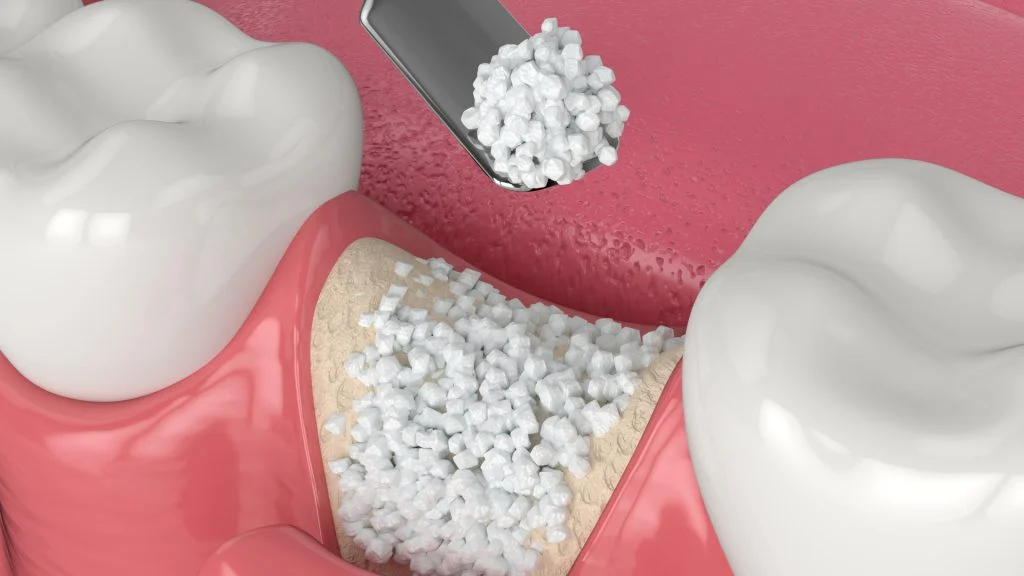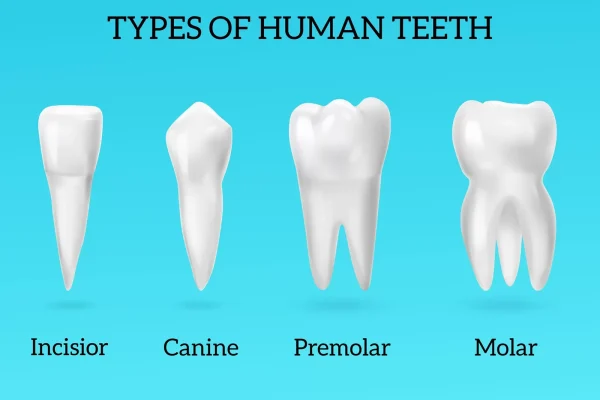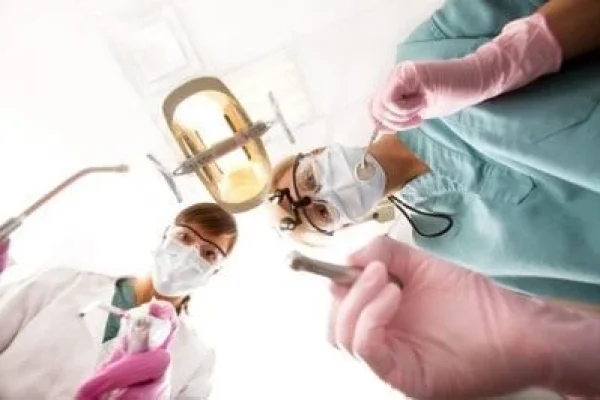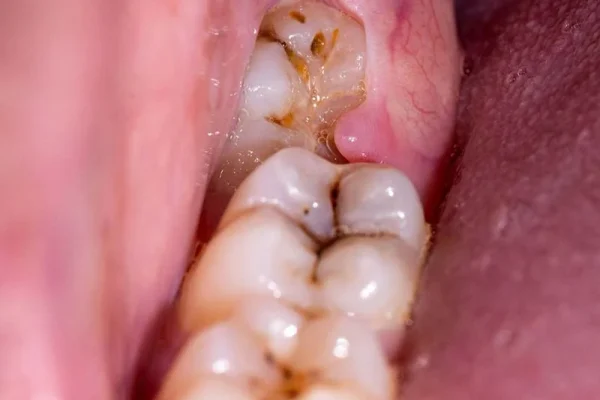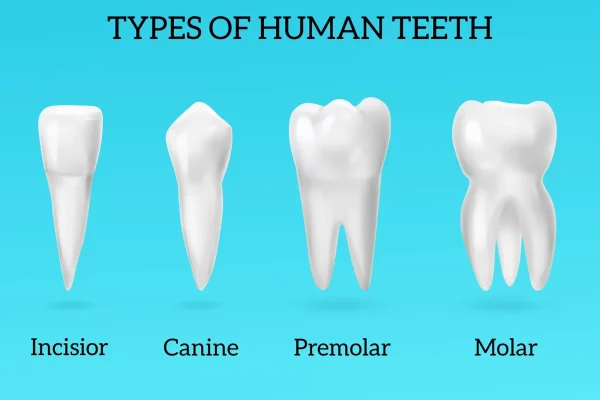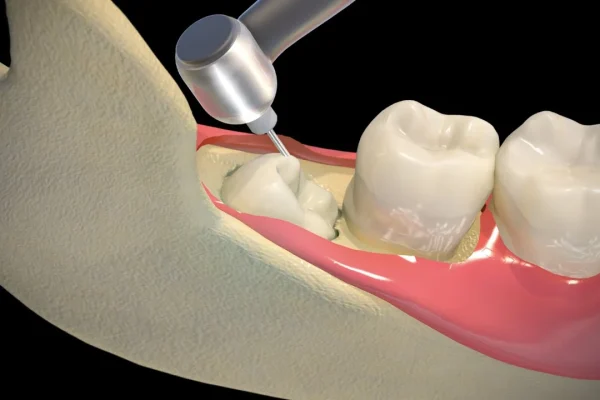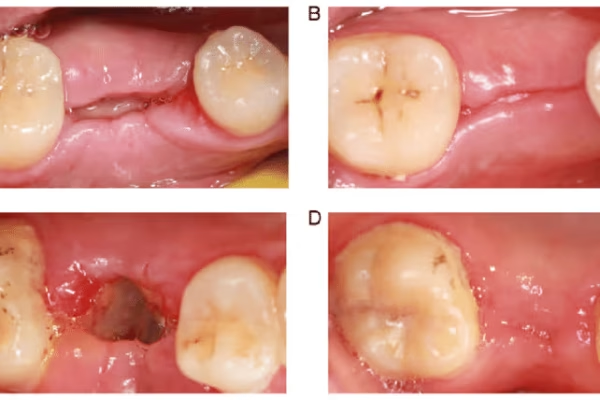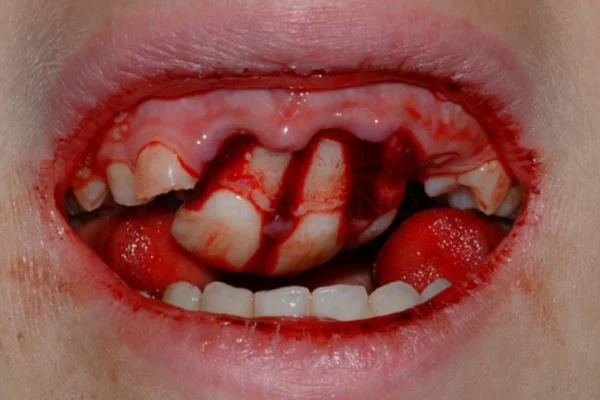
Key Takeaways
-
- Dental bone grafts are complex procedures needed to restore jawbone structure.
-
- Bone loss can stem from tooth extraction, periodontal disease, trauma, or aging.
-
- Sufficient bone is critical for supporting teeth, dentures, and especially dental implants.
-
- The term “dental bone graft specialist” typically refers to dentists with advanced surgical training in bone procedures.
-
- The primary specialists performing dental bone grafts are Periodontists and Oral and Maxillofacial Surgeons.
-
- Other dental specialists like Endodontists and Orthodontists do not typically perform bone grafts.
- General dentists usually refer complex bone grafting needs to these specialists.
Finding the Right dental bone graft specialist for Your Needs
Embarking on the journey towards a dental bone graft naturally leads you to ponder the question: who is the best person for the job? The importance of selecting a truly qualified professional for something as fundamental as rebuilding your jawbone cannot be overstated. This is not a minor procedure; it requires intricate knowledge of bone structure, healing processes, surgical techniques, and sterile protocols to ensure success and minimise complications. Think of it like building the foundation of a house – you wouldn’t hire just anyone off the street; you’d seek out a structural engineer or a highly experienced foundation contractor. Similarly, with dental bone grafting, you need someone whose training and experience align specifically with this type of complex oral surgery. It’s true that the landscape of dental specialties means that different qualified dentists may perform bone grafting procedures, but the specific specialist depends heavily on the nature, complexity, and overall goals of your treatment plan. A simple, straightforward graft needed to preserve a socket after a tooth extraction might be handled differently than a large-scale reconstruction required before placing multiple implants in an area with significant bone deficiency. While the term “dental bone graft specialist” isn’t a formal, officially recognized title by dental boards in the same way “Periodontist” or “Oral and Maxillofacial Surgeon” is, when people use this term, they are almost invariably referring to dentists who have completed advanced, rigorous training in specific areas of dentistry that focus heavily on the gums, bone, and supportive structures of the mouth, as well as complex surgical procedures. These individuals possess the depth of knowledge and surgical skill necessary to accurately diagnose the extent of bone loss, determine the most appropriate grafting material and technique, perform the surgery with precision, and manage the healing process effectively. The two primary specialities that most often fit this description are Periodontists and Oral and Maxillofacial Surgeons. These are the professionals whose post-doctoral education includes extensive study and hands-on training specifically in the anatomy and physiology of the jawbone, the pathology of bone loss, and the surgical methods for augmenting and reconstructing bone. Therefore, when you hear “dental bone graft specialist,” your mind should typically gravitate towards these two highly trained fields. They are the architects and builders of the bone structure within your oral cavity, possessing the specific expertise required for successful bone grafting outcomes. Choosing the right one involves considering their experience with bone grafting procedures, their specific focus areas within their specialty, and how their expertise aligns with your individual needs and the overall treatment plan designed for your oral health. A consultation with your general dentist is often the first step, as they can provide a referral to a specialist best suited for your particular case, taking into account the complexity and required outcomes.
What Type of Dentist Performs Dental Bone Grafts and Treats Bone Loss?
Delving deeper into the specifics, the performance of dental bone grafts and the comprehensive treatment of bone loss primarily fall within the purview of certain dental specialties. These aren’t procedures typically taught or performed as part of the standard curriculum for general dentists. Instead, they require additional years of focused, post-doctoral training, research, and clinical experience. The dental specialties most intimately involved in these complex procedures are those whose entire focus revolves around the intricate structures that support your teeth and form your jawbone – the very foundation of your oral health. We’re talking about specialists who spend their advanced training studying the anatomy, physiology, and pathology of the gums, ligaments, and critically, the alveolar bone and jawbone itself. They understand how these tissues function, how they are affected by disease or trauma, and how to intervene surgically to restore health and structure. The two main players in this arena are Periodontists and Oral and Maxillofacial Surgeons. Periodontists are the experts in preventing, diagnosing, and treating diseases of the supporting tissues of the teeth, which emphatically includes bone loss caused by periodontal (gum) disease, the most common cause of bone loss in adults. Their training is deeply rooted in understanding the dynamics of bone health and regeneration in the context of the tooth’s environment. Oral and Maxillofacial Surgeons, on the other hand, are the surgical experts of the mouth, jaw, and face. Their extensive surgical training covers a vast range of procedures, including complex bone grafts, facial trauma reconstruction, jaw surgery, and tooth extractions, often involving significant bone manipulation and reconstruction. Both specialties are uniquely equipped through their advanced education and clinical practice to assess the severity and pattern of bone loss, identify its underlying cause, develop a strategic treatment plan that may include bone grafting, and perform the necessary surgery with a high degree of skill. This procedure is absolutely crucial for numerous reasons. For individuals planning to get dental implants, adequate bone volume and density are non-negotiable requirements for the implant to be stable and successful long-term. Bone grafting rebuilds the necessary foundation. For those suffering from advanced periodontal disease, grafting can help regenerate bone lost to infection, improving the prognosis for affected teeth or preparing the site for future tooth replacement. Even for patients who wear dentures, bone loss can make the dentures loose and uncomfortable; grafting can help restore height and width to the jaw ridge, significantly improving denture stability and fit, thereby enhancing chewing efficiency and overall quality of life. The procedures range from simple socket preservation after extraction to extensive block grafts or sinus lifts, each requiring precise surgical execution and a thorough understanding of healing biology, all of which are core competencies of these specialists.
What kind of dentist treats bone loss?
When the conversation turns to treating bone loss within the oral cavity, particularly in the jaw, the focus narrows sharply to a couple of key dental specialists whose training and daily practice are centred on this very issue. These aren’t general practitioners; they are dentists who have undergone significant additional education and residency programs specifically dedicated to the complex interplay between soft tissues, bone, and overall oral structure. The primary specialists diagnosing, managing, and treating bone loss in the jaw are periodontists and oral and maxillofacial surgeons. Periodontists, as highlighted earlier, are the experts in the structures supporting the teeth, and crucially, this includes the alveolar bone that surrounds the tooth roots. Bone loss is a hallmark symptom of advanced periodontal disease, and periodontists are uniquely qualified to diagnose the extent of this loss using clinical examination and imaging, identify the aggressive bacteria responsible, and implement treatments to halt the disease progression and, where possible, regenerate lost bone. Their training provides them with an in-depth understanding of bone biology, grafting materials (like autografts from the patient’s own body, allografts from donor tissue, xenografts from animal sources, or alloplasts which are synthetic), and surgical techniques specifically aimed at restoring bone volume and height around teeth or in areas where teeth have been lost. Oral and maxillofacial surgeons, with their extensive surgical background, are also exceptionally well-equipped to treat bone loss, especially when it’s caused by trauma, tooth extractions, or requires more extensive reconstruction for implants or other prosthetic devices. Their training involves a broader scope of surgical procedures involving the entire facial skeleton, but bone grafting within the jaw is a core part of their expertise. They are often involved in larger grafting procedures, such as those needed for significant defects, or procedures like sinus lifts, which involve augmenting bone in the upper jaw near the sinus cavity to accommodate implants. The why behind their qualification is simple yet profound: their advanced training programs are heavily weighted towards surgical procedures involving bone manipulation, grafting, and regeneration. They learn not just how to perform the surgery, but also the intricate biological processes of bone healing, how different grafting materials behave, how to manage complications, and how to integrate bone grafting into a larger treatment plan. Bone grafting, in its various forms, is a fundamental treatment method in their arsenal for combating bone loss, whether the goal is to save existing teeth threatened by periodontal disease, prepare a site for dental implants, or improve the function and fit of prosthetic devices. Thus, when you need treatment for bone loss in your jaw, these are the specialists you will most likely be referred to, as they possess the necessary skills, knowledge, and experience.
What is a bone dentist called?
It’s a common and understandable question, given the crucial role bone plays in oral health and procedures like grafting. However, to be absolutely clear, there isn’t an official, recognized dental specialty formally titled “bone dentist.” This term isn’t used within the professional dental community to describe a specific type of practitioner. Instead, the procedures involving the diagnosis and treatment of bone loss, as well as bone grafting, are integral components of the practice for specialists with different, officially recognized titles. The work commonly associated with what someone might informally call a “bone dentist” is actually performed by periodontists and oral and maxillofacial surgeons, as we’ve discussed. These are the professionals whose advanced training specifically encompasses the intricacies of bone biology, pathology, loss, and reconstruction within the oral and maxillofacial region. The reason there isn’t a singular “bone dentist” title is that bone health and manipulation are intertwined with other complex aspects of oral health and surgery that these specialties cover more broadly. A periodontist doesn’t only deal with bone; they are experts in the entire periodontium – the tissues supporting the teeth, including gums, ligaments, and cementum, in addition to the bone. Their focus is on maintaining or restoring the health of this supporting apparatus, with bone grafting being a critical tool when bone loss is present, often due to gum disease. An oral and maxillofacial surgeon’s scope is even wider, encompassing trauma surgery, reconstructive surgery, pathology, implants, and complex extractions alongside bone grafting. While bone procedures are a significant part of their practice, it’s within the context of this larger surgical specialty. So, while “bone dentist” is a straightforward way to think about a dentist who deals with bone, the reality is that the professionals performing these vital procedures hold the titles of Periodontist or Oral and Maxillofacial Surgeon. These titles reflect the full breadth of their specialized training, which extends beyond just bone to encompass the entire complex environment in which the bone resides and functions. When you’re seeking someone who can assess your bone density, diagnose bone loss, or perform a bone graft, you’re looking for a periodontist or an oral surgeon. They are the de facto “bone dentists” in practical terms, possessing the specific qualifications, experience, and surgical skill sets required for these technically demanding procedures. Understanding this distinction helps clarify which type of specialist you need to seek out for issues related to bone loss and the potential need for bone grafting, guiding you towards the appropriately trained professional rather than searching for a title that doesn’t officially exist within the dental profession’s structure.
Can a periodontist do bone grafts?
Absolutely, with a resounding yes! Periodontists are not only qualified to perform dental bone grafts, they are often the specialists most frequently involved in these procedures, particularly when the bone loss is a result of periodontal disease or when grafting is needed in preparation for implants in a previously periodontally involved area. Their entire specialty, periodontics, is fundamentally centered on the health and treatment of the structures that support your teeth. This includes, in significant part, the alveolar bone that anchors the tooth roots. Periodontal disease, a bacterial infection affecting the gums and bone, is a leading cause of jawbone loss. Periodontists are the experts in diagnosing and treating this disease and its devastating effects on the bone. Consequently, techniques for regenerating or augmenting lost bone are core competencies within their training and practice. Their post-doctoral education is deeply immersed in the biology of bone, the mechanisms of bone resorption and regeneration, and the surgical techniques required to place grafting materials effectively. They learn to assess bone defects with precision, choose the most suitable grafting material for a given situation (whether it’s augmenting a ridge, filling a defect around a tooth, or preparing a site for an implant), and perform the surgery with minimal trauma to surrounding tissues. Common scenarios where a periodontist would perform a bone graft include socket preservation after a tooth extraction to prevent the natural shrinkage of the bone ridge that occurs when a tooth is removed. This is crucial if an implant is planned for that site later. They also perform grafts during periodontal surgery to repair defects caused by the disease process, helping to stabilise affected teeth and potentially regenerate lost support. Furthermore, they are heavily involved in bone grafting procedures specifically to prepare sites for dental implants, particularly in areas where periodontal disease or previous extractions have led to insufficient bone volume or density. This might involve minor ridge augmentation or more complex procedures. Their expertise extends to understanding how the grafted bone integrates with the existing bone and how the healing process needs to be managed to ensure a successful outcome. Their intimate knowledge of the periodontium makes them exceptionally skilled at performing grafts in areas directly adjacent to teeth or in sites intended for implant placement that need careful consideration of soft tissue management as well as bone. Therefore, if you are experiencing bone loss due to gum disease or need bone grafting to support a tooth or prepare for an implant in a periodontally-compromised area, a periodontist is an exceptionally qualified specialist to consult and undertake the procedure.
Can a prosthodontist do bone grafting?
Now, let’s consider the role of a prosthodontist in the context of bone grafting. Prosthodontists are highly specialized dentists, focusing on the restoration and replacement of missing teeth and oral structures. They are the experts in crowns, bridges, dentures, veneers, and perhaps most significantly in this discussion, complex implant-supported prostheses. Their advanced training revolves around planning complex restorative treatments, understanding occlusion (how teeth fit together), and fabricating sophisticated dental prosthetics to restore function, aesthetics, and oral health. Bone grafting, while sometimes necessary as a prerequisite for the treatments they plan (particularly dental implants), is not their primary area of surgical focus or the core of their specialty training in the way it is for periodontists or oral surgeons. However, the landscape of dentistry is dynamic, and some prosthodontists, particularly those with extensive experience or specific additional training in surgical techniques related to implant placement, may perform certain types of bone grafts, often simpler ones like minor ridge augmentations or socket preservation procedures. This is more common among prosthodontists who place their own dental implants, as understanding and managing the underlying bone is critical for successful implant integration and the eventual prosthetic restoration. They might handle less complex grafting needs that are directly integrated into the implant placement process. Nevertheless, for more extensive bone deficiencies, complex anatomical challenges, or cases requiring large volumes of grafted bone or techniques like sinus lifts, a prosthodontist will typically refer the patient to a periodontist or an oral and maxillofacial surgeon. This collaborative approach is very common in modern dentistry, especially for complex restorative cases involving implants. The prosthodontist, as the “quarterback” of a complex treatment plan, will determine the final prosthetic outcome and the necessary bone support required, then involve the appropriate surgical specialist (periodontist or oral surgeon) to prepare the site through bone grafting. The prosthodontist’s expertise lies in designing the final tooth or restoration and ensuring it is properly supported, which requires adequate bone, but performing the complex bone-building surgery itself often falls outside their core specialized area compared to the other two specialties. So, while some may perform limited grafting, it’s not their defining characteristic, and referrals to periodontists or oral surgeons for significant bone grafting needs are standard practice.
Which Dental Professionals Typically Do Not Perform Bone Grafts?
To fully understand who does perform dental bone grafts, it’s helpful to clarify which dental specialists typically do not include this procedure within their standard scope of practice. Dentistry is a vast field, broken down into numerous specialties, each requiring years of additional, focused training beyond dental school. These specialties concentrate on specific areas of the mouth, teeth, or related structures, developing deep expertise in those particular domains. While all dentists receive foundational knowledge in bone biology and oral anatomy during dental school, the advanced surgical techniques, grafting material science, and extensive management of complex bone defects necessary for bone grafting are not part of the core curriculum for most specialties. Therefore, the following dental professionals generally do not perform dental bone grafts, as their training and practice are centred on entirely different aspects of oral health and treatment. Understanding this distinction helps patients know who to seek out for bone-related issues and who is likely to refer them to the appropriate specialist. It underscores the fact that while all dentists are crucial providers of care, the specific nature of a problem like bone loss necessitates consulting a specialist whose entire professional focus and advanced skill set are dedicated to diagnosing and treating such complex conditions. Their lack of involvement in bone grafting is not a reflection of their competence within their own field, but rather a logical division of expertise based on years of highly specialized education and clinical practice. Their training is invaluable for the specific services they provide, but those services simply do not involve major surgical bone reconstruction. This clarification reinforces the importance of seeking out the correctly trained specialist when facing bone loss or needing a graft, ensuring you receive care from someone whose qualifications precisely match the demands of the procedure.
Can endodontists do bone grafts?
Endodontists are the dental specialists who delve into the intricate world inside your tooth. Their specialty, endodontics, is focused entirely on the dental pulp (the soft tissue containing nerves, blood vessels, and connective tissue) and the root canals – the passages within the tooth’s roots. The most common procedure performed by an endodontist is root canal therapy, which involves treating infection or inflammation within the pulp and root canals, cleaning out the diseased tissue, and sealing the space. They are experts in diagnosing and treating tooth pain arising from pulp issues and managing complex root canal anatomy. Their training involves advanced techniques in diagnosis, pain management, micro-dentistry for accessing the root canals, and the biological processes related to pulp health and healing within the tooth. Given this highly specific focus, performing bone grafts is entirely outside the scope of standard endodontic practice. Endodontists work within the tooth structure and root canal system. Bone grafting, by contrast, involves augmenting or reconstructing the bone surrounding the tooth roots or in areas where teeth are missing – the supporting structure of the tooth and jaw, not the tooth itself. While endodontic infections that spread beyond the root tip can sometimes affect the surrounding bone (leading to a periapical lesion or cyst that causes localized bone loss), the endodontist’s treatment addresses the source of the infection within the tooth, allowing the body’s natural healing processes to potentially repair the bone defect on its own over time. They do not surgically graft bone in these situations. Their surgical procedures, when necessary, typically involve apical surgery (apicoectomy), which removes the tip of the root and seals it, sometimes in conjunction with removing infected tissue and cysts from the bone around the root tip, but this is not bone grafting in the sense of adding material to regenerate lost volume for structural support or future implants. Therefore, you would not seek out an endodontist for a bone graft. Their expertise lies within the internal health of the tooth itself, not the reconstruction of the surrounding jawbone. If bone loss is present due to an endodontic issue, treating the root canal is the primary step, and any necessary bone reconstruction or assessment for future implants would then fall under the domain of a periodontist or oral surgeon, potentially after the endodontic issue is resolved and healing has occurred.
Do orthodontists do bone grafts?
Orthodontists are the specialists dedicated to perfecting your smile through the alignment of teeth and jaws. Their practice centers on diagnosing, preventing, and treating dental and facial irregularities (malocclusion) using a variety of appliances like braces, clear aligners, retainers, and sometimes other corrective devices. Their advanced training focuses on dentofacial orthopedics, understanding growth and development of the jaw and face, biomechanics of tooth movement, and planning complex treatment sequences to achieve optimal alignment, function, and aesthetics of the bite. Bone is certainly relevant to orthodontics, as teeth move through the bone during orthodontic treatment. Orthodontists must have a thorough understanding of how bone responds to the forces applied by orthodontic appliances (bone resorption on one side of the root and bone deposition on the other allow tooth movement), and they must ensure that bone levels are healthy enough to support tooth movement without causing damage. However, their role is manipulating tooth position within the existing bone structure and guiding jaw growth, not surgically augmenting or reconstructing large volumes of lost bone. Performing bone grafts is not part of the standard orthodontic curriculum or practice. While an orthodontist might identify a patient with bone loss (perhaps due to previous periodontal disease or missing teeth) that could complicate or contraindicate orthodontic treatment, their course of action would be to refer the patient to a periodontist or oral surgeon for assessment and potential bone grafting before or sometimes during complex orthodontic treatment. For example, if a patient needs an implant in an area with bone loss but also requires orthodontic movement of adjacent teeth, the orthodontist might coordinate with a periodontist or oral surgeon to ensure the bone graft is performed successfully and integrates before final tooth positioning or implant placement. Similarly, in cases of severe jaw discrepancies, an orthodontist might work in conjunction with an oral surgeon who performs orthognathic (jaw) surgery, which does involve manipulating bone, but the bone grafting performed in these complex surgical cases is within the oral surgeon’s scope, not the orthodontist’s. Therefore, while bone health is important for orthodontic success, the act of surgically performing bone grafts is emphatically not part of an orthodontist’s practice. Their expertise is in moving teeth and aligning jaws, not in the surgical reconstruction of bone volume or density.
Can a regular dentist do a bone graft?
Let’s address the role of a general dentist, sometimes referred to as a “regular dentist,” in the context of bone grafting. General dentists are the cornerstone of dental care for most people. They provide a wide range of essential services, including routine check-ups, cleanings, fillings, simple extractions, crowns, bridges, and basic preventative care. Their training is comprehensive, covering all aspects of oral health to provide foundational care and identify when more specialized treatment is needed. However, the complexity, potential risks, and technical demands of most dental bone grafting procedures typically require a level of advanced surgical training and experience that goes beyond the scope of general dental practice. While some general dentists may perform very minor grafting procedures, such as a straightforward socket preservation immediately after a simple, uncomplicated tooth extraction, this is not universally true and depends heavily on the individual dentist’s post-graduate continuing education and comfort level. Complex bone grafting, including procedures like ridge augmentation for multiple missing teeth, block grafts for significant width deficiencies, or sinus lifts, involves intricate surgical techniques, precise handling of grafting materials, sterile field management, and managing potential complications that require expertise developed through dedicated specialty training. These procedures are significantly more involved than routine dental work. Therefore, for the vast majority of dental bone grafting needs, particularly those related to preparing sites for dental implants, treating bone loss from moderate to severe periodontal disease, or reconstructing bone lost due to trauma or pathology, a general dentist would most certainly refer the patient to a specialist – either a periodontist or an oral and maxillofacial surgeon. This referral is not a limitation of the general dentist but rather a reflection of their commitment to ensuring their patients receive the highest standard of care from the professional best equipped to handle the specific, complex nature of the procedure. A general dentist plays a crucial role in identifying the need for a bone graft, educating the patient about it, and coordinating care with the specialist. They manage the patient’s overall oral health and integrate the bone grafting procedure into the larger treatment plan, often working closely with the specialist throughout the process. But the actual surgical act of performing the bone graft is, in almost all cases involving more than the simplest scenarios, performed by a periodontist or oral surgeon.
Frequently Asked Questions About dental bone graft specialist
Navigating the path to understanding dental bone grafts can bring up several common questions, many of which circle back to identifying the right professional for the job. It’s entirely natural to seek clarity when faced with a procedure that involves rebuilding bone structure, a fundamental element of your oral foundation. Patients often wonder about the specific titles of the dentists involved, the scope of their practice regarding bone, and whether their current dentist can perform the necessary work. This section addresses some of the most frequently asked questions, offering concise yet comprehensive answers drawn from the detailed information covered in the previous sections, aimed at providing quick reassurance and directing you towards the appropriate specialists. Understanding these distinctions is key to making informed decisions about your treatment and ensuring you receive care from a dentist whose qualifications and experience align precisely with the demands of bone grafting. These questions reflect the public’s natural curiosity and occasional confusion regarding the various roles within the dental profession, especially when confronted with procedures outside the realm of routine care. Clarifying who does what provides peace of mind and streamlines the process of seeking treatment. It underscores that while dentistry is a unified field dedicated to oral health, specialization allows for the development of deep expertise in complex areas like bone reconstruction, ensuring optimal outcomes for patients facing these specific challenges. This section serves as a convenient summary, reiterating the core takeaways about the specialists involved in dental bone grafting and treatment of bone loss, making the information readily accessible and easy to digest after reading the more detailed explanations above.
What Type of Dentist Performs Dental Bone Grafts and Treats Bone Loss?
The types of dentists who primarily perform dental bone grafts and treat significant bone loss are specialists with extensive post-doctoral training focused on the structures supporting the teeth and jaw. These are not procedures typically undertaken by general dentists, although some general practitioners with specific advanced training might perform very minor forms like simple socket preservation after an uncomplicated extraction. The bulk of bone grafting procedures, especially those involving complex techniques, significant volume augmentation, or grafting in challenging anatomical locations, falls squarely within the domain of periodontists and oral and maxillofacial surgeons. Periodontists are the experts in the periodontium—the gums, ligaments, and crucially, the bone surrounding the teeth. Their training includes deep dives into the diagnosis and treatment of periodontal disease, which is a major cause of bone loss, and they are highly skilled in surgical techniques to regenerate or augment bone lost to this disease or in preparation for dental implants. Oral and maxillofacial surgeons are surgeons of the face, mouth, and jaw. Their training is broad, encompassing a vast array of surgical procedures, and complex bone grafting for reconstruction, trauma, and implant site preparation is a significant part of their practice. They are often involved in larger scale grafts, such as block grafts from other parts of the jaw or body, and procedures like sinus lifts. These two specialties possess the necessary advanced knowledge of bone biology, surgical expertise, and experience to safely and effectively perform dental bone grafts and manage the underlying causes and effects of bone loss. Their specific educational paths equip them with the detailed understanding required for successful bone regeneration and integration, which are critical for long-term treatment success, especially when dental implants are part of the plan. Choosing one of these specialists ensures that you are being treated by someone whose daily practice and advanced training are centred on complex bone procedures.
What is a bone dentist called?
The term “bone dentist” is an informal, non-official designation that people sometimes use to refer to a dental professional who deals extensively with the bone structure of the jaw. However, there is no recognized dental specialty or official title called “bone dentist.” The procedures associated with this informal term—namely, diagnosing and treating bone loss, and performing bone grafting—are carried out by dentists who hold specific, advanced specialty titles. These are predominantly periodontists and oral and maxillofacial surgeons. These specialists are the ones whose rigorous, years-long post-dental school training has provided them with the deep understanding of bone biology, pathology, and surgical techniques required for successful intervention in cases of bone deficiency or loss. A periodontist specializes in the supporting structures of the teeth, including the alveolar bone, and is an expert in managing bone loss often caused by periodontal disease, utilizing grafting techniques to restore lost bone volume. An oral and maxillofacial surgeon is a surgical specialist who handles a wide range of procedures involving the hard and soft tissues of the face, mouth, and jaw, with complex bone grafting for reconstruction and implant support being a core competency. So, while “bone dentist” is a convenient way to conceptualize the role, the actual professionals are periodontists and oral surgeons. Seeking out these specific specialists ensures you are consulting with someone whose entire career path and advanced education have been dedicated to mastering the complexities of bone treatment within the oral cavity. They possess the diagnostic skills to evaluate the extent and cause of bone loss, the knowledge to select the appropriate grafting material and technique, and the surgical skill to perform the procedure safely and effectively, managing the delicate biological processes required for bone healing and regeneration.
Can a periodontist do bone grafts?
Absolutely, yes, periodontists are extensively trained and highly qualified to perform dental bone grafts. In fact, bone grafting is a fundamental component of their specialty. Periodontics is the branch of dentistry focused on the diagnosis, prevention, and treatment of diseases affecting the gums and bone that support the teeth. Since periodontal disease is a leading cause of bone loss in the jaw, periodontists routinely encounter and treat conditions that necessitate bone grafting. Their advanced training specifically includes the detailed study of bone biology, the mechanisms of bone resorption (loss) and deposition (growth), and sophisticated surgical techniques designed to restore or regenerate bone. Common types of bone grafts performed by periodontists include socket preservation following tooth extraction to maintain the bone volume for potential future implant placement, grafting procedures performed during periodontal surgery to repair bone defects caused by gum disease around existing teeth, and larger scale ridge augmentation to increase the width or height of the jawbone in areas where teeth have been missing for a long time, specifically to create a suitable foundation for dental implants. Their expertise allows them to assess the specific bone defect, determine the most appropriate grafting material and technique from a variety of options (autograft, allograft, xenograft, alloplast), and perform the surgery with precision, paying close attention to the health of the surrounding soft tissues (gums), which also falls under their area of expertise. They are also adept at managing the post-operative healing process to ensure successful integration of the graft material and regeneration of new bone. Their specialization makes them particularly skilled in cases where bone loss is related to periodontal issues or where the graft needs to be integrated into the environment of existing teeth. Therefore, if you have bone loss due to gum disease or need bone grafting to prepare for an implant in a periodontally complex area, a periodontist is an excellent choice of specialist to consult and perform the procedure.
Can a prosthodontist do bone grafting?
The role of a prosthodontist in bone grafting is somewhat different from that of a periodontist or oral surgeon. Prosthodontists are specialists focused on the restoration and replacement of missing teeth and other oral structures using prosthetics like crowns, bridges, dentures, and dental implants. Their expertise lies in complex treatment planning, restoring function and aesthetics, and fabricating sophisticated dental prostheses. While bone grafting is often a necessary prerequisite for the treatments they provide, particularly dental implants which require adequate bone support, bone grafting surgery is not the primary focus of their specialized training in the way it is for periodontists or oral surgeons. Some prosthodontists, particularly those who also place dental implants, may receive additional training or gain experience performing simpler bone grafting procedures, such as straightforward socket preservation after an extraction or minor ridge augmentation to facilitate implant placement. This is because understanding the underlying bone is crucial for the success of implant-supported restorations, and some may choose to integrate minor surgical procedures into their practice. However, for more significant bone deficiencies, anatomically complex sites, or procedures requiring large volumes of graft material or advanced techniques like sinus lifts, prosthodontists typically work collaboratively with or refer the patient to a periodontist or an oral and maxillofacial surgeon. These specialists have dedicated their advanced training to mastering complex bone surgery. The prosthodontist, in such cases, acts as the lead clinician who plans the overall restorative treatment and coordinates with the surgical specialist to ensure the bone foundation is adequate for the planned prosthetic outcome. So, while some prosthodontists might perform very basic grafting, it’s not a core defining aspect of their specialty, and complex or extensive bone grafting procedures are almost always referred to or performed by periodontists or oral surgeons, who are the dedicated experts in oral bone surgery and reconstruction.
Can a regular dentist do a bone graft?
A “regular dentist,” or general dentist, provides a broad spectrum of primary dental care services, including routine check-ups, cleanings, fillings, basic extractions, and preventative advice. Their training encompasses general knowledge across all areas of dentistry to diagnose common problems and provide foundational treatment. However, complex surgical procedures like most dental bone grafts require advanced training, specialized knowledge, and significant surgical experience that is typically acquired through dedicated post-doctoral specialty programs. Therefore, while a general dentist is qualified to identify that a patient needs a bone graft (for example, noting significant bone loss on an X-ray or planning a future implant), they would most likely refer the patient to a dental specialist for the actual bone grafting procedure. There might be some exceptions where a general dentist with substantial continuing education and experience in specific surgical techniques might perform very minor grafting, such as immediate socket preservation after a simple tooth extraction to help maintain the bone volume in that area. However, this is not universally true among all general dentists, and even when performed by a general dentist, it’s usually the most basic type of graft. Procedures involving more extensive bone regeneration, reconstruction of larger defects, or grafts in anatomically complex areas (like sinus lifts) are well beyond the scope of standard general dental practice and carry higher risks if performed without the necessary specialized training. A general dentist’s primary role in relation to bone grafting is often diagnosis, patient education about the need for the graft, and referring the patient to the appropriate specialist (a periodontist or oral and maxillofacial surgeon) who has the expertise, equipment, and experience to perform the procedure safely and effectively. They then typically resume the patient’s care after the grafting and healing are complete, often coordinating with the specialist throughout the treatment process.
There you have it – a comprehensive look at the world of dental bone grafting and the specialists who make it happen. It’s a complex area, but with the right information, you can confidently navigate your options and find the perfect professional to rebuild your smile’s foundation. Remember, clarity is power, especially when it comes to your health. Stay informed, ask questions, and connect with the experts who can guide you every step of the way..

